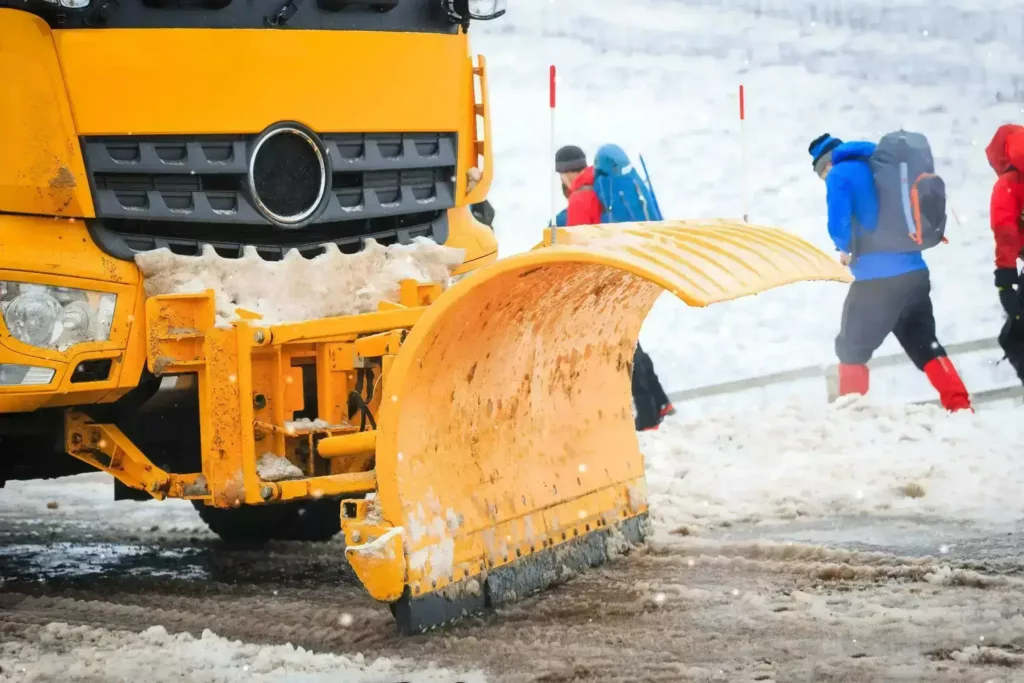As the biting cold of winter looms over the Northeast, the question on everyone’s mind: Will our roads survive the icy onslaught? Snowstorms, black ice and treacherous conditions are just around the corner, threatening to bring everyday life to a halt.
Our local councils have a responsibility to ensure these machines are ready for operation, with adequate stock of grit and well established winter response plans. However, how many are prepared this year?
Aquaseal Rubber, purveyors of quality snowplow tires, reached out to the Northeast’s biggest tips to find out what your daily commute could look like this winter.
Song, guts and grit – but who’s really ready?
Each council has its own strategy, shaped by the size of the area it covers and the resources it has at its disposal. Gateshead Council, responsible for 55 square miles, looks well equipped with a fleet of nine gritters, each of which can carry a snowblower, and four additional vehicles in reserve. With 19,000 tons of sand available, they ensure they can manage the roads all winter long. Still, there were only two road accidents last winter due to bad weather – a testament, if you like, to a well-oiled winter machine. But does this year’s brutal freeze defeat their dominance?
In contrast, South Tyneside Council clears a much smaller area of 25 square miles, has a fleet of five gritters. However, their winter plan emphasizes flexibility, with provisions to provide more grit and resources if needed. Although they maintain a smaller stockpile of 5,000 tonnes of grit, their focus on contingency measures seems to have paid off as they reported just one winter-related accident last year. Despite their limited resources, South Tyneside’s adaptive approach demonstrates that efficiency and readiness do not always require extensive stockpiles.

The middle tip: Newcastle’s cautious approach
Newcastle Council now sits somewhere between the two. Responsible for 44 square miles, they operate seven sand pits, each with attached snowplows, and 6,500 tons of sand. Like many other councils, their plan extends beyond clearing roads to include footpaths and cycle lanes, as well as providing self-help sand bins for residents. Newcastle’s inclusion of these factors is particularly detailed. So while they didn’t provide accident data, their efforts to expand safety measures for all types of road users show a commitment to comprehensive winter training. Since no incident data has been published, it is impossible to estimate the true value of the effort. Extra cautious or preparing for the worst?
Plenty of grit or not? The brave game of North Tyneside
North Tyneside Council, covering 33 square miles, has a different, somewhat interesting approach. North Tyneside boasts the highest amount of grit (12) ever and yet the lowest amount of grit at 3,500 tonnes. They do, however, have clear guidelines for when and how to treat roads and trails. Last year, they reported no winter-related car accidents, suggesting that their slightly left-wing approach seems to be working effectively for the area they govern. One can’t help but ask if this is a high-risk strategy driven by overconfidence?
Sunderland’s strong position and Northumberland’s giant challenge
Similarly, Sunderland Council, responsible for 53 square miles, also reports zero accidents and has a well-equipped fleet of 12 gritters with snow plows, along with a robust stock of 12,000 tonnes of sand. Their detailed plan prioritizes clearance time and decision-making, ensuring roads are processed quickly and efficiently. Impressive? Of course it is. But given the unpredictability of winter, no advice can be too sure.
However, larger councils face greater challenges. Northumberland Council, covering a vast area of 1,940 square miles, has the largest area to look after and plans to do so with 28 grits and four more in reserve, all with ploughs. They also boast an impressive 44,000 tonnes of grit, with another 6,000 tonnes reserved for emergencies. Despite its vast resources, Northumberland experienced eight car accidents last winter, the highest number reported among municipalities. This suggests that while their scope is wide, the scale of their responsibility makes it difficult to effectively manage road safety in all areas. Their plan, which includes preventive salting and snow removal of roads, pedestrian and bicycle paths, remains robust, but last year’s figures highlight the difficulties of managing such a large region.
Meet the winter giant: Durham’s vast resources
Durham Council, covering 862 square miles, also manages a vast area with 37 power gritters, 47 trailers and 168 snowblowers. With 42,000 tons of sand, they are well prepared to meet the demands of winter. Although no crash figures were provided, the scale of their resources and detailed winter plan – covering everything from processing routes to post-processing routes and snow routes – suggests Durham is up to the challenge.
The verdict: Who will come out on top?
Each of the North East’s councils is tackling the winter season with plans and resources tailored to their specific needs. While smaller councils such as South Tyneside Council and North Tyneside Council plan to be nimble in their approach, relying on emergencies and timely action, larger councils such as Northumberland Council and Durham Council must manage large areas and – complicated logistics.
Variations in grit supplies, fleet sizes and winter plans reflect the variety of conditions and challenges each council faces. However, the success of these preparations will ultimately be judged by how well they can keep the roads safe as winter approaches.
